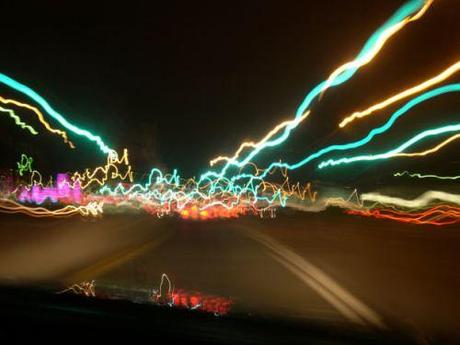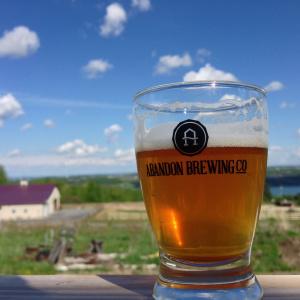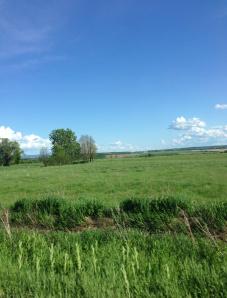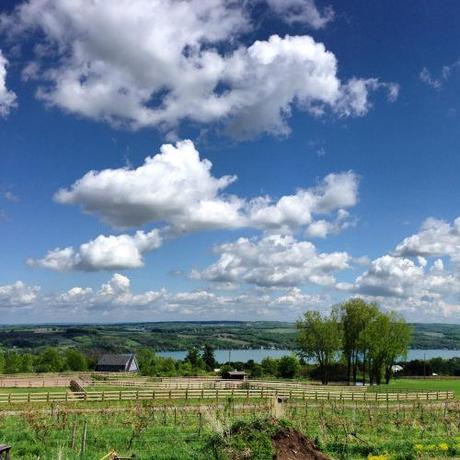
It wasn’t until recently that I truly noticed what it was like growing up in my hometown of Geneva, NY.
Tucked away in the middle of wine country and farmland, Geneva is surrounded by rolling hills and backroads identifiable only be the numbers given to them. If you’ve driven County Road 4, you might as well have driven County Road 6 or 23 or any other, really.
After spending the past six years among the sprawl of North Carolina’s Triangle region, I now realize how easy it is to forget about what my youth was like: speeding by cows and tractors and long stretches of nothing but green grass or tilled earth.
For a long time, Geneva and the Finger Lakes have been known as a premiere Northeast location to enjoy wine with more than 100 wineries and counting. But like areas all over the country, beer is taking hold and the number of breweries is exploding. In the last four years, the number of breweries in New York State has increased 180 percent, quite a few of them appearing amongst the farmlands where I grew up.
Not only does this excite me as a beer enthusiast, but also as a new reason to look forward to visiting home. But as I recently drove from one county road to the next, I began to wonder how this growth and the natural geography of the region may impact beer drinkers in a negative way – if they don’t recognize the need to be responsible.
 While home, I had the chance to visit Abandon Brewing, a year-old brewery perched on the top of hilly farmland where nearby vineyards sprout grapevines and farms raise chickens and grow garlic. It’s four miles from downtown Penn Yan, NY, a town I’ve only ever visited for my own high school athletic events over a decade ago. Now there’s a new reason to visit the village of less than 6,000 people.
While home, I had the chance to visit Abandon Brewing, a year-old brewery perched on the top of hilly farmland where nearby vineyards sprout grapevines and farms raise chickens and grow garlic. It’s four miles from downtown Penn Yan, NY, a town I’ve only ever visited for my own high school athletic events over a decade ago. Now there’s a new reason to visit the village of less than 6,000 people.
In this case, I was lucky to have someone providing my transportation, but I couldn’t help but wonder how many didn’t.
The natural growth of craft beer lends itself to a local movement. People want locally produced products and business owners want to connect to their community. As the number of breweries exponentially grows, however, geographical placement also becomes a factor. To maximize success, location matters, especially if you’re trying to corner your own niche market where competitors aren’t hanging over your potential consumer footprint.
It’s good to have land, but it’s also good to have some breathing room from other breweries. Even if you have lots of local accounts to deliver your beer, there’s a good chance the main focus for these new businesses is brewing beer to be sold in a taproom and bringing people on-site.
This, of course, doesn’t naturally equate to drunk driving problems. If anything, craft beer enthusiasts are among the most responsible drinkers I’ve met. However, drinking to points of excess is something for which I have a natural aversion, let alone the threat of drinking and driving.
But to be clear, DUI arrests are incredibly volatile and there should be no direct assumption more breweries means more drunk driving. Between 2003 and 2012, nationwide DUI arrests actually dropped almost 100,000 while the number of alcohol-based businesses like cideries or breweries increased. Additionally, this decrease took place while the cumulative number of alcohol laws passed in all states has gone up in recent years.
In fact, some of the fastest growing states for brewery growth actually saw minimal or negative trends in DUIs between 2012 and 2013. Illinois, which had 29 more permitted breweries from 2012 to 2013, saw an increase of 717 DUI arrests. Over that same time, New York (45 newly permitted breweries) and Ohio (32 newly permitted breweries) saw their DUIs decrease by 7,884 and 16,541, respectively.
 But this doesn’t mean that drinking and driving isn’t something we should think about in relation to explosive brewery growth. Especially in areas like the Finger Lakes, where cost of land may be low, offering larger space for growth in more remote areas.
But this doesn’t mean that drinking and driving isn’t something we should think about in relation to explosive brewery growth. Especially in areas like the Finger Lakes, where cost of land may be low, offering larger space for growth in more remote areas.
At a time when national brands like Stone, Oskar Blues, Sierra Nevada and New Belgium are busy expanding footprints on both coasts, the very small urban or rural brewery unique to our local communities is becoming a norm.
That was something highlighted by Brew York in April, when Chris O’Leary went hunting (digitally) for the most remote brewery in America. Hawaii and Alaska may be no surprise to offer secluded beer businesses, but it was Big Bend Brewing in Alpine, Texas that sits 227 miles away from the nearest brewery in New Mexico:
The nearest airport with commercial service is 158 miles from the brewery. Heck, even the nearest Interstate highway is 57 miles from Big Bend Brewing. … The brewery caught the attention of the media across Texas, and people are coming from far and wide to visit. And considering its remoteness, “far and wide” is a lot further than a quick little day trip.
Whether they’re in a city or hidden across country roads miles from civilization, breweries are going to be built, and people will come. My hope is that our travels will be smart and those country roads will take us home – safely.

+Bryan Roth
“Don’t drink to get drunk. Drink to enjoy life.” — Jack Kerouac
Note: Above DUI arrest rates were compiled from the Department of Justice and FBI Uniform Crime Report. Because states may see fluctuation in the number of agencies reporting data year-to-year, please know these were the most accurate figures I could easily obtain.

